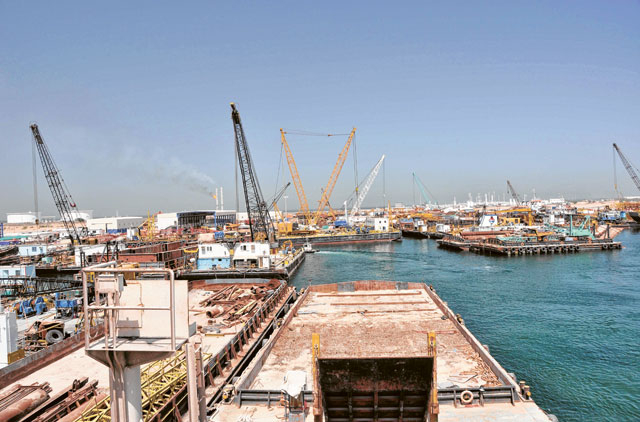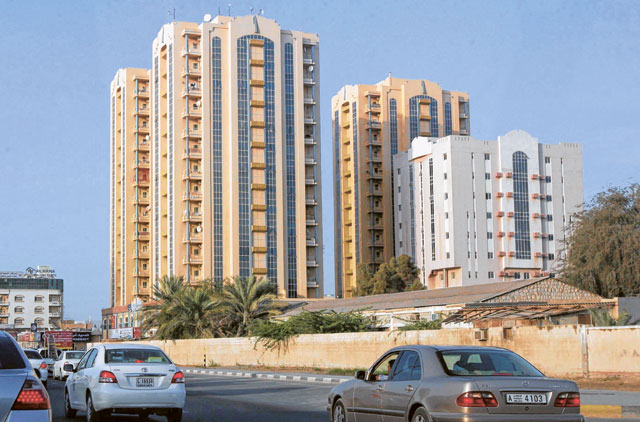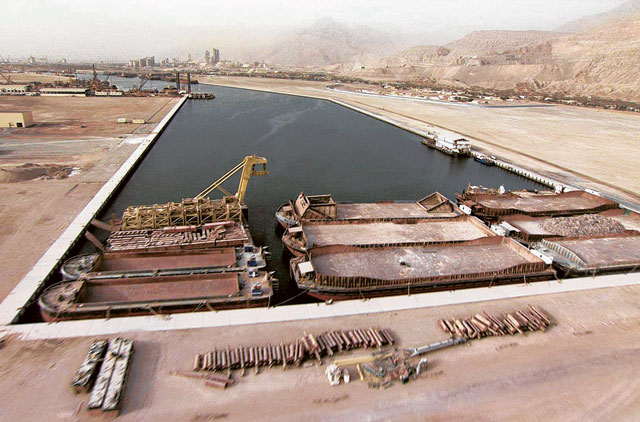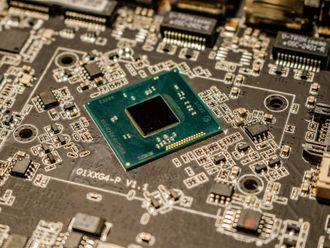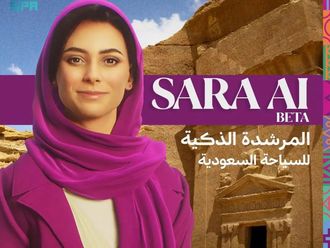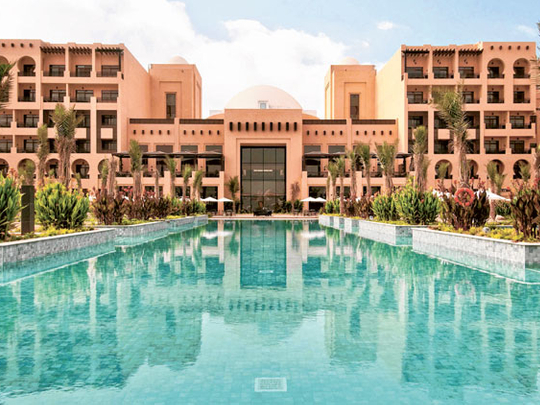
Ras Al Khaimah: Following the accession of His Highness Shaikh Saud Bin Saqr Al Qasimi as Member of the Supreme Council and Ruler of Ras Al Khaimah in 2010, the emirate has embarked on rapid expansion and development, building its status as the UAE's third business hub.
Over the last eight years, Shaikh Saud has played a big part in establishing entities such as the Ras Al Khaimah Investment Authority (Rakia), introducing government and legal reforms to attract business to its free zones and investing in its tourist and commerce infrastructure.
"I want to build a diverse economy that enjoys strong, sustainable growth through attracting investments to create wealth and raise the standards of living for all the people of Ras Al Khaimah," said Shaikh Saud.
Comprising only 1.5 per cent of the UAE's economy, the emirate's compact size in proportion to its econ-omically robust neighbours meant it wasn't as badly hit by the recent downturn.
From this stable base, RAK has consistently achieved "A" ratings from Standard and Poor's and is set to continue on its steady growth path.
According to a recent report by the Oxford Business Group, the population of Ras Al Khaimah which is estimated at 241,000, is forecast to grow to 750,000 by 2020 with the development of its industry, trade, tourism and real estate sectors.
Shaikh Saud said in a recent interview with Gulf News that he expects the economy to grow 8 to 10 per cent in the next year.
Home-grown models
The prestige of several home-grown companies has already put RAK on the map.
Julphar, the pharmaceuticals company, is now one of the most prominent general pharmaceutical companies in the region, exporting 90 per cent of its production to more than 45 countries.
RAK Ceramics, which was established in the 1980s, is now one of the world's biggest ceramic and porcelain tiles manufacturers, accounting for more than $1 billion (Dh3.6 billion) in global sales annually.
Since its establishment in 2005, the Rakia has been fuelling the emirate's economic development.
The entity is responsible for the emirate's industrial, commercial, trade, health and educational development initiatives and also manages the emirate's three investment zones: Industrial Zone, the Free Zone in Al Hamra and the Industrial Park in Al Ghail.
By the end of 2010, Rakia generated industrial investments of almost $3 billion and posted a 28 per cent increase in licences issues compared to the previous year.
"By strengthening our global reach and through very productive marketing campaigns, we have accelerated the momentum from 2010, which also was an excellent year for us in terms of performance. The progress we have achieved in the first four months of 2011 puts us firmly on track for another highly successful and productive year," said Dr Khater Massaad, CEO of Rakia.
In the first four months of 2011, the entity issued 491 licences, bringing the total to 4,170 licences issued since 2006.
Convenience and reasonable prices have made the Ras Al Khaimah Free Zone (RAKFTZ) one of the more popular free zones in the UAE.
In the first quarter of this year, RAKFTZ announced that 522 new companies registered with the free zone, a 17 per cent increase over the same period in 2010. Rakia also announced that 970 licences were renewed during the first quarter compared to 710 in 2010, an increase of 36.6 per cent.
Attractive zones
"The tremendous increase in new registrations and licence renewals in the first quarter of 2011 reinforces our reputation as one of the most attractive investment zones in the Middle East. Our open door economic development policy has gone a long way towards gaining investor confidence from across the globe, as is evident from both the new registrations and the renewals," said Oussama Al Omari, CEO and Director-General of Ras Al Khaimah Free Trade Zone Authority.
As an emirate that is not as oil rich as its neighbours, Rakia has turned its focus on investing and developing both local and international metals and minerals industries.
In 2008, Rakia launched Ras Al Khaimah Mineral and Metals Investment (RMMI) to develop the local infrastructure while identifying opportunities in emerging markets in Africa, Eastern Europe and the Far East.
Its most recent investment has been in the coal industry in East Kalimantan in Indonesia. RAK has long benefited from its proximity to the Strait of Hormuz and has enjoyed its position as a major import, export and trans-shipment hub.
The emirate operates four ports; Saqr, Al Jazeera Al Hamra, Al Jeer and RAK Khour.
Between 2009 and 2010, the government consolidated all of these ports under one umbrella structure of RAK Ports, managed by Saqr Port Authority in a bid to increase efficiency and cooperation.
In July, the government launched the Dh520 million Maritime City. The new industry-specific city is expected to boost the local economy and generate Dh40 million in revenue in its first year of operations.
"The city serves to ele-vate Ras Al Khaimah to the position of a dominant global shipping centre of excellence operating to world-class standards. It also sets out the blueprint for the sustainability of the maritime industry in Ras Al Khaimah, and indeed the region, which after all is an inherent part of this emirate's heritage and legacy," said Captain Colin Crookshank, general manager of RAK Maritime City.
To support the growth of its expanding industrial areas, the government has also invested large amounts in infrastructure development.
Up to $1.55 billion is to be invested to improve the water and power distribution networks in RAK and the other northern emirates, along with planned upgrades to road links.
Service standards
Following this upgrade, the emirate may soon have the same standard of services as Abu Dhabi and Dubai without the high cost and congestion, according to Oxford Business Group.
Local airline RAK Airways which relaunched its operations less than a year ago is still very much in the initial stages of its redevelopment.
The airline now flies to five destinations directly: Calicut, Jeddah, Cairo, Dhaka and Chittagong. According to Omar Jahameh, CEO of RAK Airways, since its relaunch, the airline has been carrying over 20,000 passengers a month.
Load factors have typically averaged around 80 per cent with many flights sold out.
"Due to the heavy demand for RAK Airways' services, the frequency of flights to Calicut has been increased to five flights a week from its initial four. Active consideration is also being given to increasing the number of Jeddah flights and new routes too," said Jahameh.
The airline is benefiting from RAK's high expatriate population, originating mostly from the subcontinent, which will continue to remain the focus of its expansion plans.
According to Jahameh, it will soon be announcing new routes.
However analysts are sceptical about the airline, saying the market share is already too full.
"We've seen RAK Airways bite the dust once before and their bizarre strategy this time around [of not being either a low-cost or full-cost airline] will cost them dearly. They are geographically isolated and demand to fly to Ras Al Khaimah, a niche market, is finite."
Along with developing its position as a shipping hub, RAK's ambitious ten-year plan also involves pumping millions of dollars into the development of tourism projects and infrastructure to quadruple tourism footfall by 2021 from 80,000 visitors in 2010.
The emirate hopes to see tourism revenues account for 20 per cent of its income by 2021 by positioning itself as a lower-cost destination compared to its more luxurious neighbour, Dubai.
Last April the government established the RAK Tourism Development Authority, responsible for the planning, regulation and development of tourism and tourist destinations.
"We aim to create an impact as a strategic player and increase our portfolio with a goal to attract world-class hotel corporations and investors to the emirate of Ras Al Khaimah that is with our robust economic growth and strong tourism expansion plan in the next few years," said Shaikh Saud at the launch.
High end developments
As part of this development plan, the emirate has been investing in high-end hotel developments including Hilton Worldwide.
The hotel brand, which entered RAK in 2001, has three hotels in the emirate and a further two are in the pipeline including a Waldorf Astoria, the company's most luxurious hotel brand.
"The properties are doing quite well. Average occupancy [in the Hilton RAK and the Hilton RAK Resort and Spa] were 70 per cent in 2010 while average occupancy was 85 per cent in the first quarter of 2011.
"We are looking at almost 10 to 15 per cent growth across all properties in RAK," said Erwin Van Der Veen, hotel manager at the newly opened DoubleTree Hotel.
Other five-star developments are reporting good occupancy rates.
"The 2011 figures have grown over 20 per cent over last year.
"Growth has been progressive and the future looks very bright here in RAK," said Joe Batshoun, general manager of The Cove Rotana Resort.
Last month the government also acquired Banyan Tree Al Wadi from Rakeen Development.
While the emirate pushes full steam ahead in developing the tourism infrastructure, financial constraints have left some more ambitious projects in the dust.
In 2008, the Space Investment Company (SIC) signed an agreement with the government through Rakia for the construction of a Dh380 million Space Centre.
The facility which was expected to be completed in 2010, was predicted to draw at least one million visitors during its first five years of operations, but the project still has not materialised. The company couldn't be reached for comment.
While RAK suffered a slowdown in property development between 2009 and 2010, industry experts are predicting a more positive 2011 with interest in residential properties taking off again and developers continuing with their development plans on high profile projects.
Property rebound
According to a recent report by the Oxford Business Group, RAK looks set to rebound from the regional downturn in the property market, with experts predicting an increase in sales and building activity.
Leading real estate developer RAK Properties posted an increase in net profits for 2010 of 10 per cent over the previous year.
The company, which is speeding up work on its $2.7 billion mixed-use Mina Al Arab project, forecasts additional growth in earnings for 2011.
Other projects which are back on track include La Hoya Bay.
Khoie Properties announced that construction has started and was expected to be completed in phases over the next four and a half years.
Both Marjan, the reclaimed island worth Dh3.67 billion and Rskeen's Bab Al Bahr are due to be finished by the end of this year.


